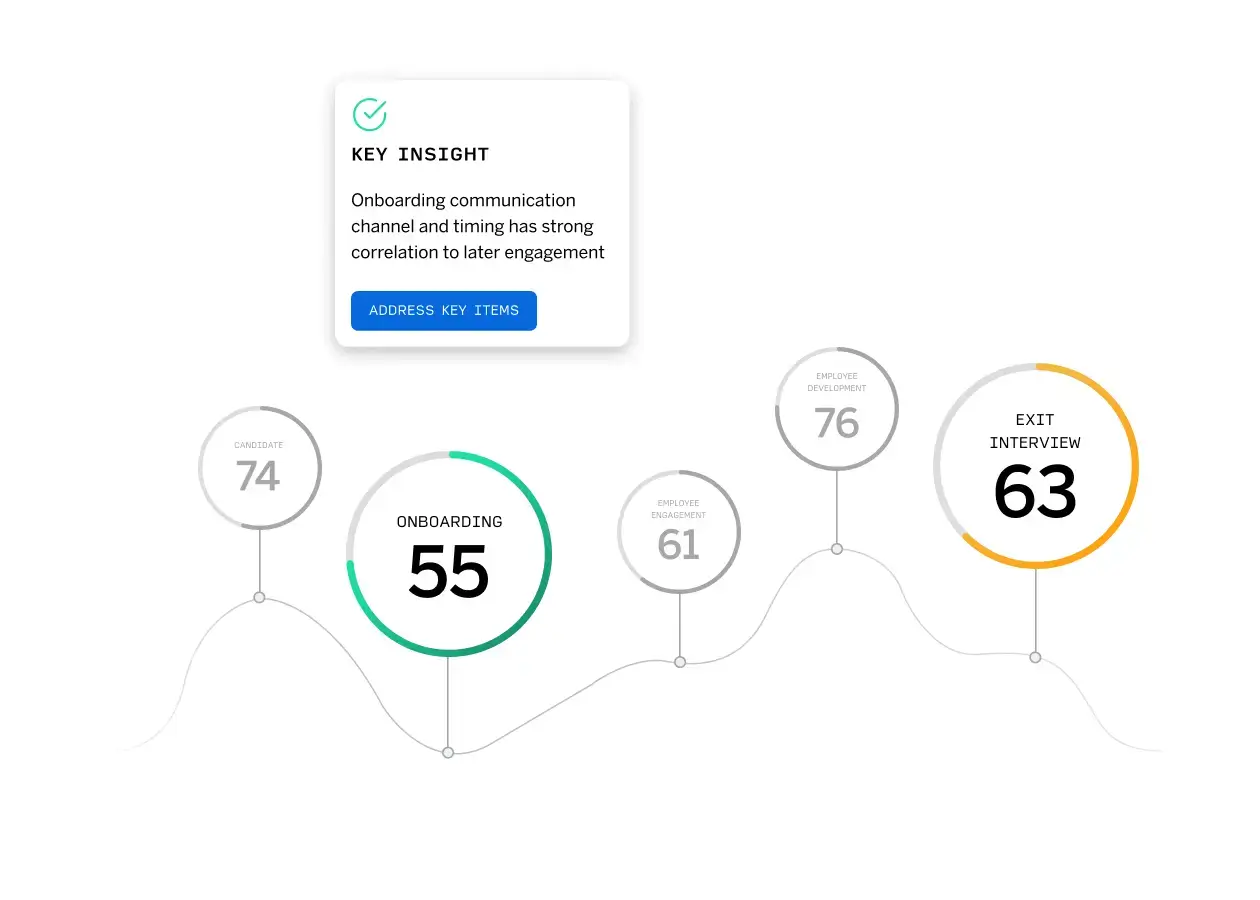Automated Lifecycle Listening
Never lose track of how
your people feel
In today’s resource-strained operating environment, leading organizations leverage intuitive and seamless automation to help orchestrate their listening programs at scale.
- Automatically trigger targeted survey invitations across your entire organization — from remote and field-based workers to office-based staff – using common HRIS data
- Reach employees through their channel of preference with omnichannel distribution across email, intranet, apps, and SMS
- Leverage no/low-code integrations to easily construct always-on lifecycle surveys across key moments of interest
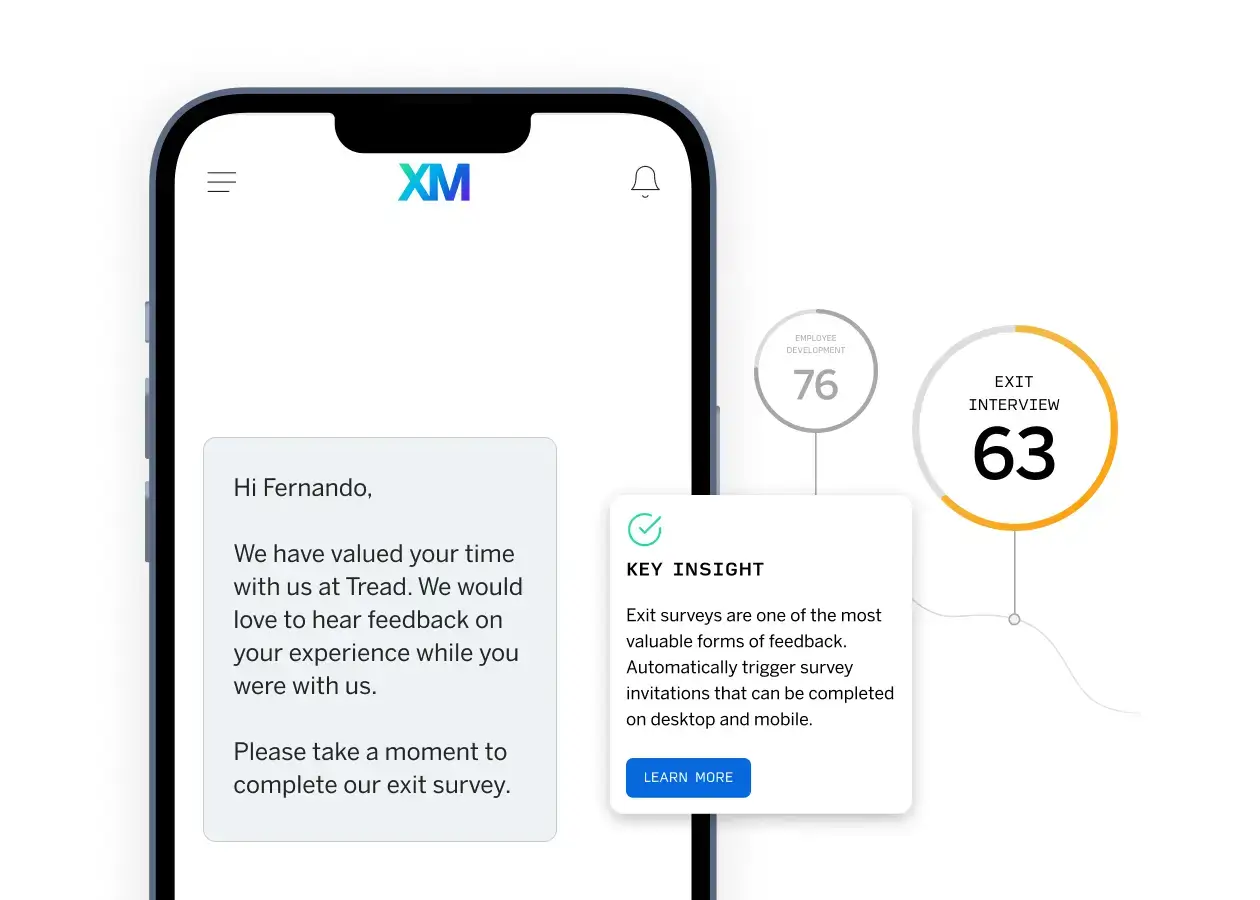
Survey insights
Turn feedback
into action
Understand how best to prioritize your investments to maximize critical business metrics like optimizing ramp time, increasing retention, and enhancing performance. Uncover opportunities to design optimal employee experiences at key moments, from parents returning to work to role transitions and promotions.
- Leverage powerful analytics to uncover hidden trends and actionable insights to close employee experience gaps and improve holistic business outcomes
- Use advanced correlations and text analytics to identify employee challenges before they become widespread problems
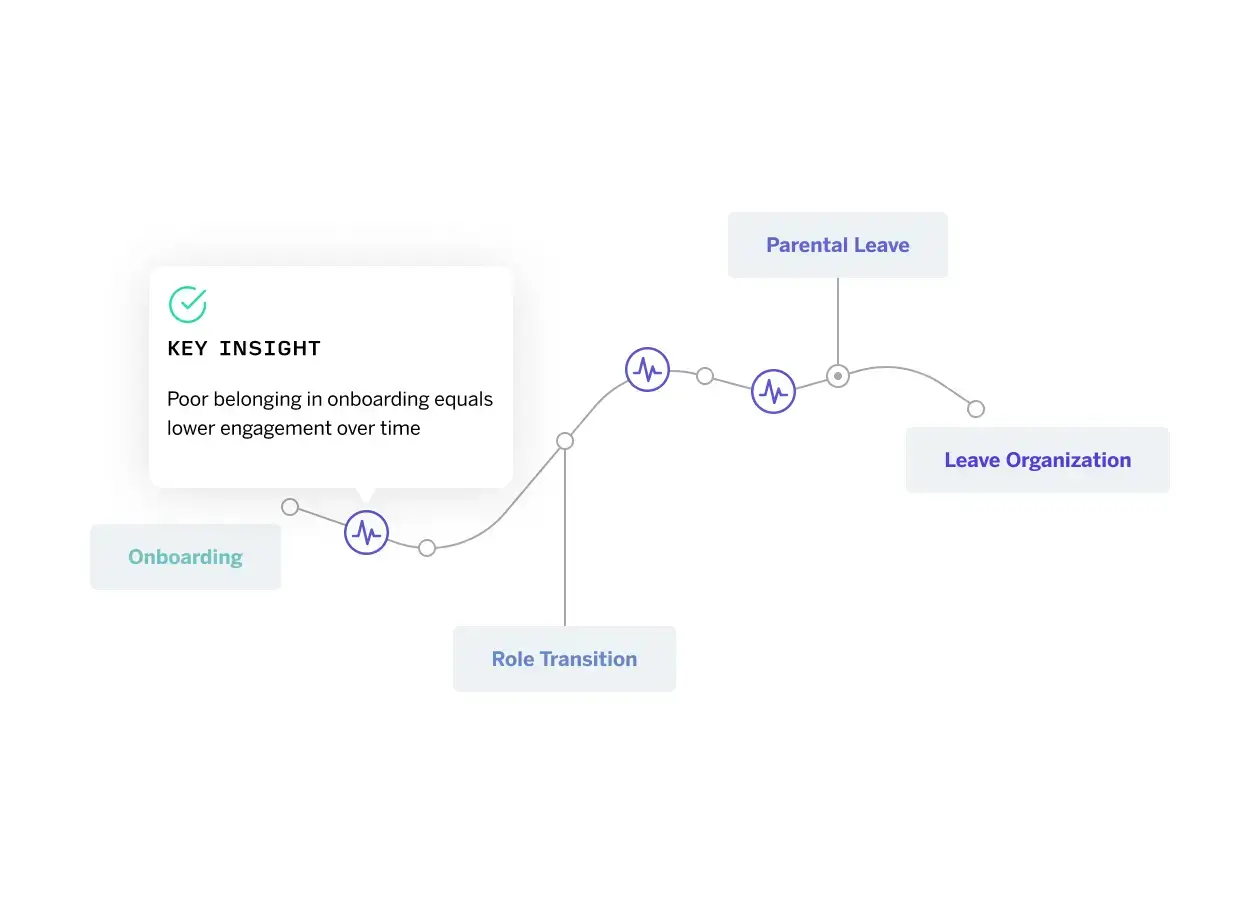
eBook_
Employee lifecycle feedback: Understanding the moments that matter most to your employees
Learn how to get started with a lifecycle approach to employee experience. Combine your employee feedback — from quarterly surveys to routine pulses — into a single platform, giving you a holistic view of their experience and the issues that matter most to them.

Take Action
Turn key lifecycle moments
into drivers of engagement
Modern organizations that utilize a large collection of tools and data across teams and workflows require an ecosystem-first approach to orchestrating employee experiences.
- Seamlessly connect employee experience lifecycle across your existing systems to unlock data and create intuitive experiences for users
- Ensure every employee interaction, from onboarding to career development, is supported by integrated, real-time insights that enhance engagement and productivity
- Utilize xFlow to build automated integration workflows to activate teams at key moments across the employee lifecycle, such as helping a new employee get access to the resources they need, are scheduling a return-from-leave check-in meeting
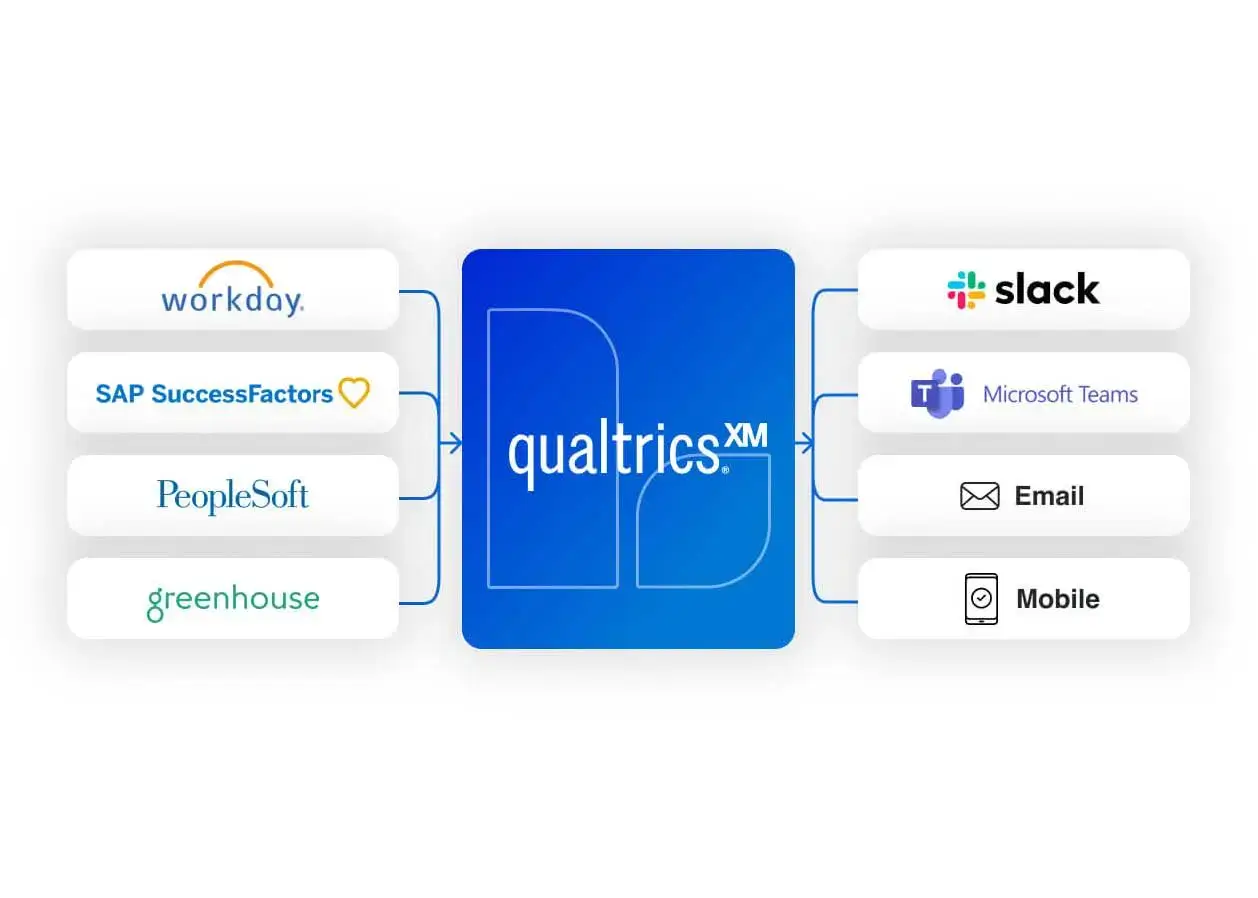
Employee Journey Analytics
Connect the dots across the
entire employee journey
The abundance of data that is captured across every employee’s journey requires compelling analysis and reporting to uncover meaningful insights.
- Employee Journey Analytics removes the silos between the data sets and enables teams to understand how one experience touchpoint later impacts other touchpoints, and how to create a better holistic experience.
- Employee Journey Analytics removes the silos between the data sets and enables teams to understand how one experience touchpoint later impacts other touchpoints, and how to create a better holistic experience.
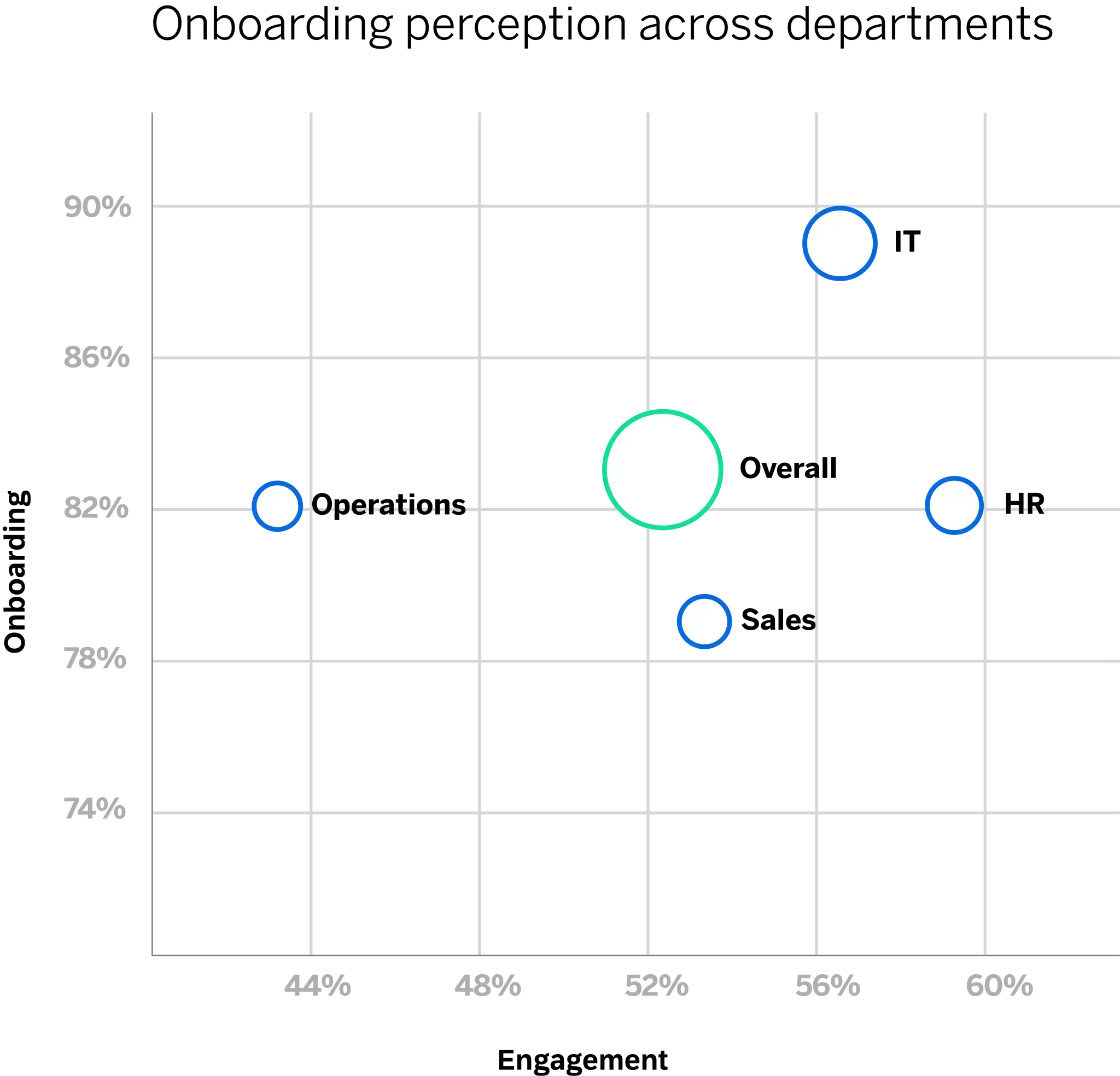
More about employee lifecycle
Each stage involves specific activities and processes aimed at attracting, hiring, training, evaluating, and retaining employees. The employee lifecycle provides a comprehensive framework for organizations to strategically manage their workforce, ensuring that employees are engaged, empowered, and supported throughout their career journey.
For example, the employee onboarding process includes getting new employees up to speed, equipping them with the right tools, and ensuring they have access to the information they need to do their job. Exit interviews, on the other hand, consist of questions that help HR and people teams understand why that employee is leaving — and what they can do better next time.
- Attract: Attracting qualified candidates to apply for job openings.
- Recruit: Selecting and hiring the most suitable candidates for the job.
- Onboard: Introducing new employees to the company, its culture, and their role.
- Engage: Encouraging a positive work environment and employee engagement.
- Perform: Setting goals, providing feedback, and evaluating performance.
- Develop: Offering opportunities for growth and professional development.
- Exit: Managing employee separations, including retirements and resignations.
